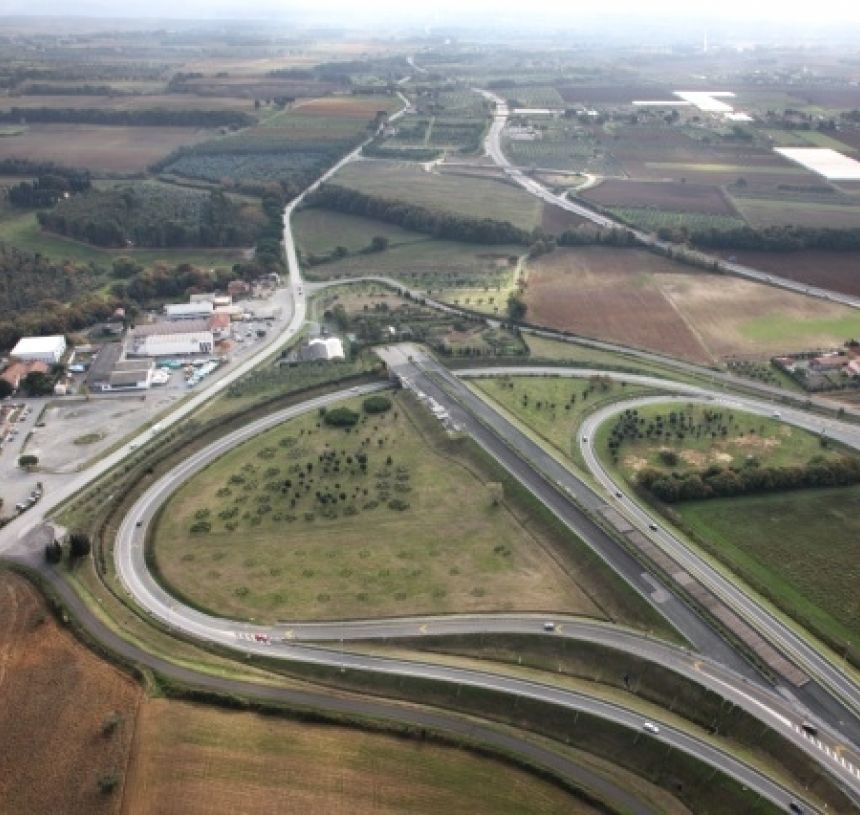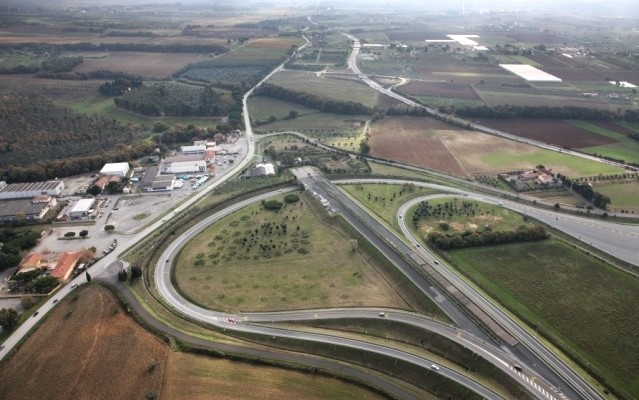
A12 Tyrrenian Corridor Livorno – Civitavecchia
The “Tyrrhenian Corridor” directly connects North West Italy and France with Rome and the South and represents one of the most important main roads in Italy.
Country: Italy
Location within country: Tuscany
Name of Client: SAT Società Autostrada Tirrenica S.p.A.
- Cost-benefit analysis
- Preliminary design
- Final Design
- Detailed Design
- Tolling Plaza localization strategy
- Environmental Impact Study
- Traffic study with traffic surveys
- Environmental Monitoring Study

Project Introduction
The “Tyrrhenian Corridor” directly connects North West Italy and France with Rome and the South and represents one of the most important main roads in Italy. Currently, the highway A12 consists of two sections, the first from Rome to Civitavecchia, the second from Rosignano Marittimo to Genoa. The design was aimed to connect the two existing sections of the highways from Civitavecchia to Livorno, adapting the existing SS1 Aurelia to highway standard.
The planned highway layout has a length of about 210 km.
The design includes:
• Nr. 31 Junctions
• Nr. 8 Service Areas
• Nr. 7 Toll Plazas
• Nr. 21 Free-Flow Portals
The highway cross section will be 24 m, with two lanes of 3,75 m for each carriageway, with an inner margin of 3 m between them. The emergency lane will be 0,70 m wide. In addition, an alternative secondary network for the traffic outside the highway was developed. This secondary road system will use the existing roads, re-qualified and connected by new roads.
Major Works (L>10m):
n° 50 Bridges/Viaducts (Adapting / Restoring)
n° 24 New Works
n° 68 Flyovers
n° 36 Underpasses
Minor Works (L<10m):
n° 76 Underpasses
n° 1.107 Culverts
Mitigation Measures:
– Acoustic Barriers
– Plants and Dunes
– Wildlife Crossing
– Quality Drainage Treatments
The toll collection will be carried out by adopting innovative technological solutions, maximizing traffic flow and reducing the environmental impact of infrastructure, in terms of land use. Specifically, Spea has studied a dynamic collection system Free Flow Multilane through which the toll is paid automatically, without toll booths, barriers and delays, allowing the free transit of vehicles without speed variation along the entire highway driving.









